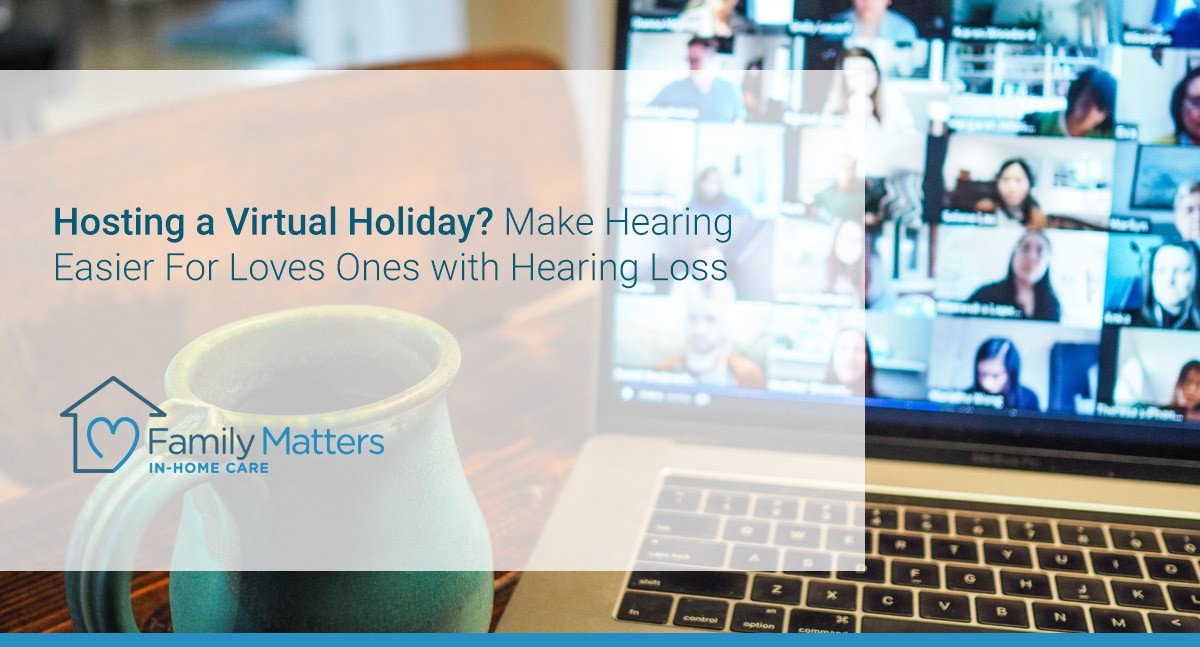
Hosting a Virtual Holiday? Make Hearing Easier For Loves Ones with Hearing Loss
This is a guest post from Dr. Pauline Dinnauer, VP of Audiological Care at Connect Hearing.
While you may not be able to meet with your family in person this year, you can still have a wonderful virtual holiday together.
In fact, you won’t even have to travel or clean the house to prepare for guests.
However, with the new arrangements also come new challenges for those that experience hearing loss. If you’re anxious about participating in virtual holiday festivities, here are some tips to help you hear your family and enjoy family virtually without frustration.
Use Captions
If you’re using video conferencing software for your virtual holiday, be sure to turn on closed captioning. Zoom, Google Hangouts, and most other video conferencing software allows you to do this. Be sure to have reading glasses on hand and make the video full screen if you worry you won’t be able to read the captions.
Here’s a guide to turning on captions in Zoom, and consider doing a test call before the meeting to learn how to turn them on. If you need help during the call, don’t be afraid to speak up.
Use Speaker View
As most people with hearing loss rely on a combination of speech and lip-reading, virtual meetings can be difficult when the visual settings are on “gallery” view. Therefore, be sure to have the video conference set to “speaker” view. Speaker view automatically puts the person speaking in full screen and reduces other participants to thumbnails making it easier to lip-read.
Again, be sure to have the conference call set to full screen to better view the speaker.
Here is a guide you can use to learn more about speaker view for Zoom specifically.
Adjust Your Device Appropriately
Whether you’re using a phone or a computer to tune into the meeting, be sure to turn up your screen. Simply brightening the screen can make it much easier for you to see other people and read lips. Be sure to turn up the volume on your device.
Reduce Background Noises
Background noise makes it much more difficult to understand what people are saying. Kenneth S. Henry, a postdoctoral researcher in Purdue’s Department of Speech, Language, and Hearing Sciences, has researched background noise extensively. He says, “When immersed in noise, the neurons of the inner ear must work harder because they are spread too thin.”
Therefore, if there are other people in your house during the call, go to a quiet room and turn off any background noise.
Speak Up
Finally, don’t be afraid to ask your family and friends to help you out. Ask the people on the call to sit in good lighting for better visibility and reduce background noise in their house. You can also ask people to speak one at a time and look directly at the camera when speaking.
Final Thoughts
If you’re still having trouble understanding those around you, consider taking breaks and only participate for 10 to 15 minutes at a time. You can also do an old fashioned phone call with those closest to you. While this year may be more challenging, it’s still possible to enjoy your family’s virtual company.
About the Author: Pauline Dinnauer is the VP of Audiological Care at Connect Hearing, which provides industry-leading hearing loss, hearing testing, and hearing aid consultation across the US.
If you or your family member is considering in-home care as part of a plan to age in place, contact Family Matters In-Home Care today for a free consultation. Our team is dedicated to supporting your family and helping older adults enjoy life in the comfort of their own home for as long as possible.
Some of the services offered by Family Matter In-Home Care include: Alzheimer’s & Dementia Care, Bed & Wheelchair Transfer Assistance, Companionship, Housekeeping & Meal Preparation, Personal Care, Recovery Care, and Transportation.
Serving the San Francisco Bay Area and Greater San Diego, Family Matter In-Home Care has offices throughout California including: Campbell, CA, Roseville, CA, San Marcos, CA, and San Mateo, CA.
